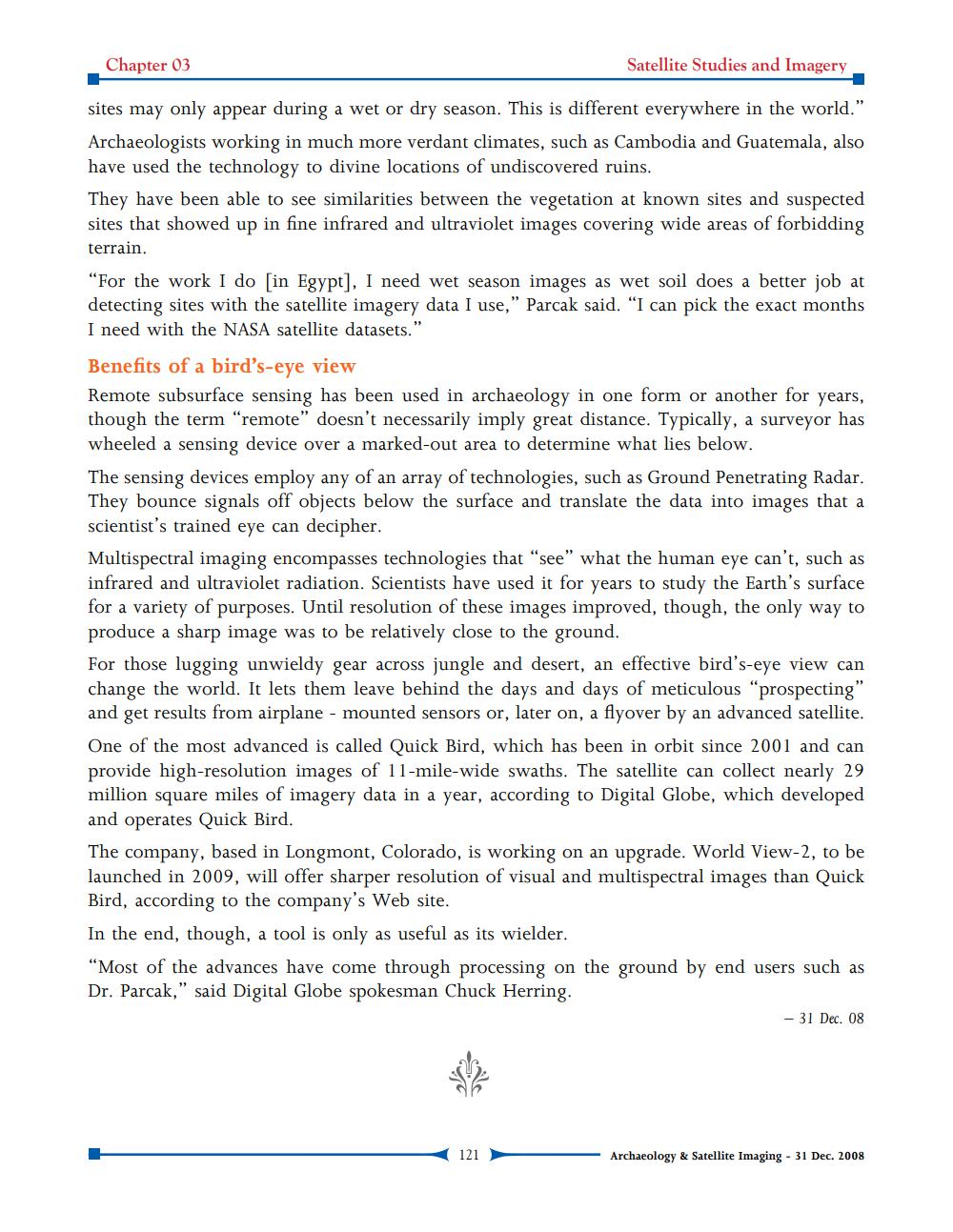________________
Chapter 03
Satellite Studies and Imagery
sites may only appear during a wet or dry season. This is different everywhere in the world." Archaeologists working in much more verdant climates, such as Cambodia and Guatemala, also have used the technology to divine locations of undiscovered ruins.
They have been able to see similarities between the vegetation at known sites and suspected sites that showed up in fine infrared and ultraviolet images covering wide areas of forbidding terrain.
"For the work I do [in Egypt], I need wet season images as wet soil does a better job at detecting sites with the satellite imagery data I use," Parcak said. "I can pick the exact months I need with the NASA satellite datasets."
Benefits of a bird's-eye view
Remote subsurface sensing has been used in archaeology in one form or another for years, though the term "remote" doesn't necessarily imply great distance. Typically, a surveyor has wheeled a sensing device over a marked-out area to determine what lies below.
The sensing devices employ any of an array of technologies, such as Ground Penetrating Radar. They bounce signals off objects below the surface and translate the data into images that a scientist's trained eye can decipher.
Multispectral imaging encompasses technologies that "see" what the human eye can't, such as infrared and ultraviolet radiation. Scientists have used it for years to study the Earth's surface for a variety of purposes. Until resolution of these images improved, though, the only way to produce a sharp image was to be relatively close to the ground.
For those lugging unwieldy gear across jungle and desert, an effective bird's-eye view can change the world. It lets them leave behind the days and days of meticulous "prospecting" and get results from airplane - mounted sensors or, later on, a flyover by an advanced satellite. One of the most advanced is called Quick Bird, which has been in orbit since 2001 and can provide high-resolution images of 11-mile-wide swaths. The satellite can collect nearly 29 million square miles of imagery data in a year, according to Digital Globe, which developed and operates Quick Bird.
The company, based in Longmont, Colorado, is working on an upgrade. World View-2, to be launched in 2009, will offer sharper resolution of visual and multispectral images than Quick Bird, according to the company's Web site.
In the end, though, a tool is only as useful as its wielder.
"Most of the advances have come through processing on the ground by end users such as Dr. Parcak," said Digital Globe spokesman Chuck Herring.
121
- 31 Dec. 08
Archaeology & Satellite Imaging - 31 Dec. 2008.




